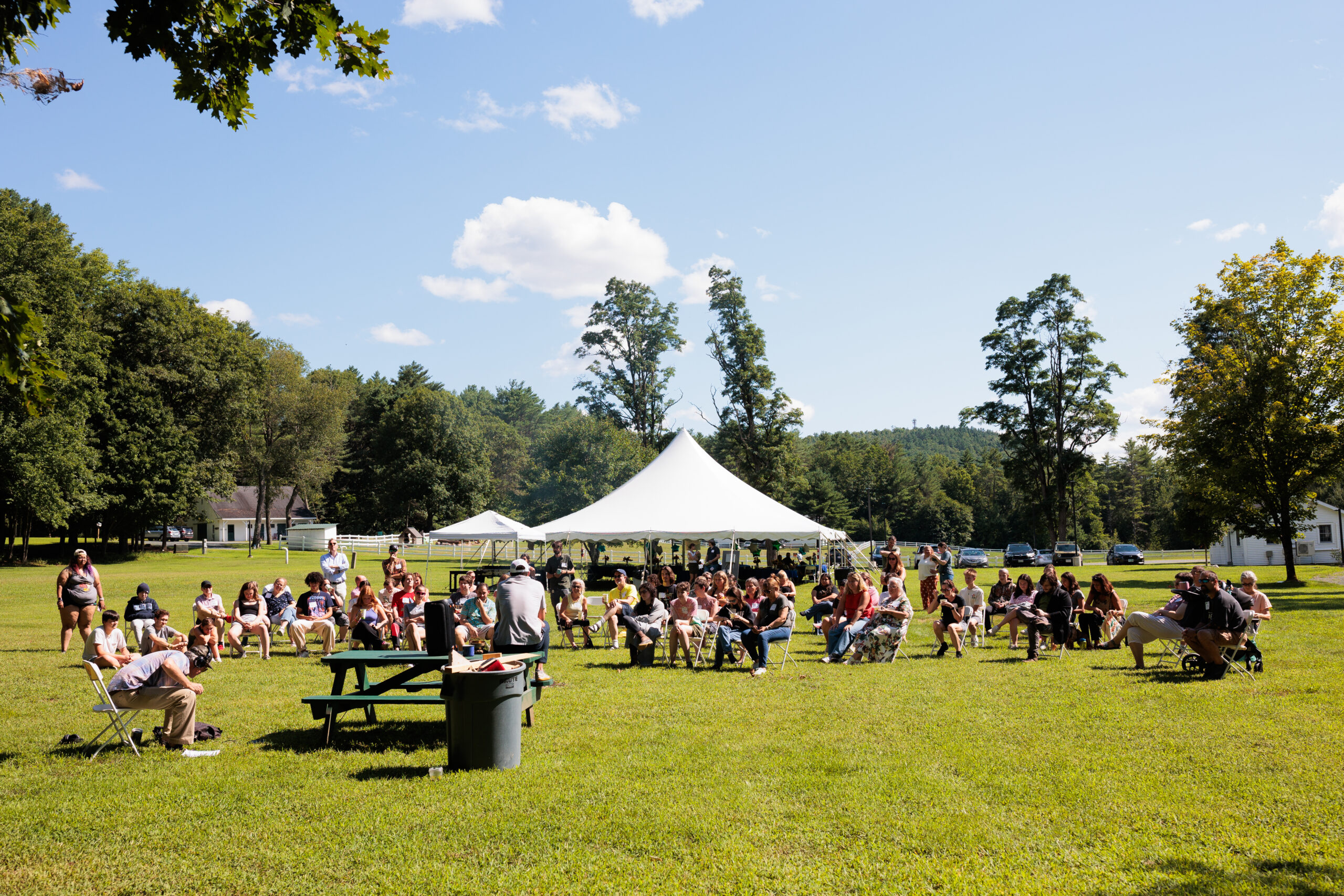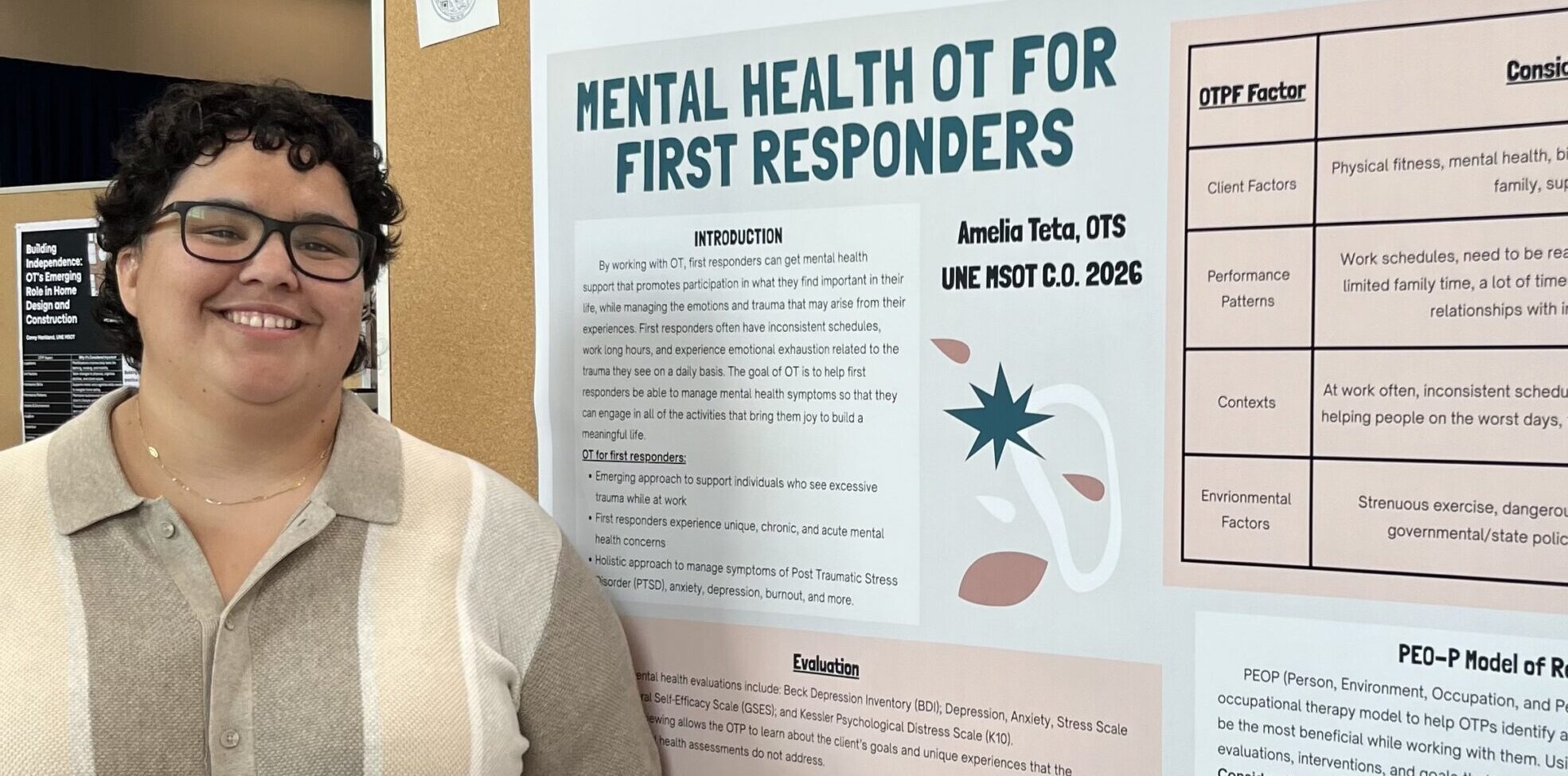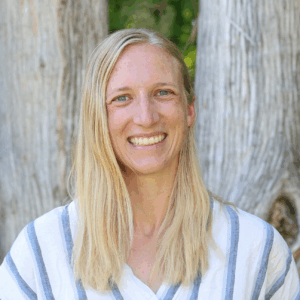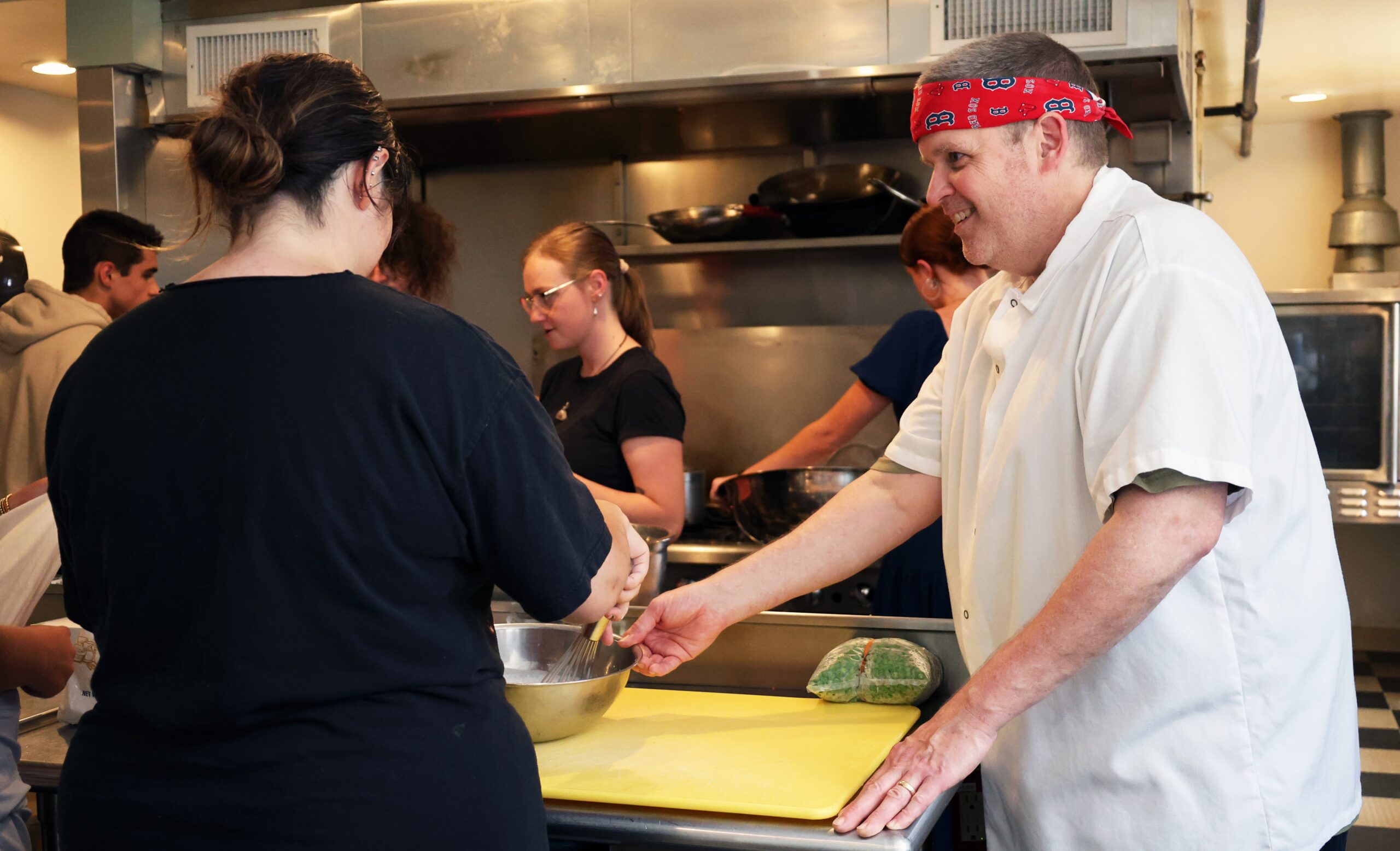August 2, 2025, was a beautiful mid-summer day in Plainfield, New Hampshire. The sky was clear, the sun was shining, and the Mountain Valley campus buzzed with energy. It was the day of our annual Mountain Valley Reunion, and more than one hundred people gathered to reconnect and celebrate the life-changing experiences they’ve had through our program.
Alumni residents and their families flew in from across the country. Current residents spent the morning rounding up farm animals for a petting zoo and hanging “Welcome Back!” signs around campus. By noon, the open field behind the Carriage House dorm was filled with laughter and joy — alumni, parents, former and current staff, and family members mingled, reconnecting, and celebrating together.
It was a day full of emotions — good ones — but even good emotions can be overwhelming.
“How did we get all these people to spend a sunny summer afternoon in the field of a residential treatment center? How did we get so lucky? What did we do to deserve this?”
These questions swirled in my mind as I walked the now-quiet campus hours after the festivities ended. Searching for an answer, I did what we encourage our residents to do: I asked myself, “What am I feeling?”
Before the question had fully formed, my body answered: love.
Love is what I was feeling. Love is what made the day what it was.
What Is Love?
Love is a powerful word and a complex emotion — one we use so often that we risk losing sight of its meaning.
Like all emotions, love is both a biological and psychological process. Biologically, it’s a cocktail of hormones — oxytocin, dopamine, vasopressin, and endorphins — the perfect “feel-good” mix. Psychologically, love shapes our thoughts and behaviors and influences the development of our relationships and attachments.
But is love just biology and psychology? Or is it something bigger? Philosophers have debated it for millennia. Plato called love “a desire for beauty and truth.” Aristotle saw it as a virtue, essential to living a moral and good life. Kierkegaard described it as a choice — a commitment that demands self-sacrifice.
No matter the lens — science, psychology, or philosophy — love’s impact on the human experience is profound and undeniable.
So how did we get here? How did strangers from different walks of life come together and find themselves in a place of love? Maybe it begins where it all started: in a place of fear.
The Relationship Between Love & Fear
As an anxiety-focused program, fear is what brings people to our door. It can steal the spark from a young person’s life, causing them to retreat, avoid, and withdraw from the world. Parents often watch helplessly as their child’s life grows smaller and their own fears grow larger until the entire family system is engulfed in fear’s shadow.
So, what do we do? How do we find the light again? And where does love fit into all of this?
Love Reduces Fear
Biologically, love is the antidote to fear. It calms the brain’s alarm system, releasing hormones that reduce stress and foster connection. That sense of connection is at the heart of what we do.
As an exposure-based program, we walk alongside anxious young people and their families as they lean into what scares them most. Through this process, they build resilience, regain confidence, and rediscover their passion for life. But their bravery begins where love can be found, so it’s our job to provide it.
Love Transforms Fear
Love doesn’t just reduce fear — it transforms it. When we are in love — with a person, place, thing, or idea — we are more willing to face our fears. As psychologist Viktor Frankl said, “A man with a why can bear almost any how.” Love gives us something bigger than ourselves to be brave for. In its most authentic form, it can turn fear into courage.
If our mission is to help young people turn fear into courage, love is a key ingredient. We help them find it in the people, places, and things around them. By tapping into what they love, we tap into their strength — harnessing it for meaningful change.
Love Is Found Through Fear
Love isn’t just a tool to reduce or transform fear — it’s often the result of facing it. Embracing what scares us — talking about it or confronting it in real time — requires vulnerability. It requires us to be seen for who we truly are. In the right context, with the right support, that vulnerability often leads to profound connection and deep acceptance. This is the primary basis for experiencing love.
So although it’s easy to see fear as a barrier to love, it can also be a bridge — and when a community faces its fears together, it often discovers deep love and connection on the other side.
A Day of Love
Our reunion was a living testament to these truths and to the relationship between love and fear. We were reminded of the fears this community has faced, met, and transcended — and inspired by the genuine connection, understanding, and love that took their place.
As the sun set on that perfect summer day, I felt deep gratitude for the privilege of being part of a community dedicated to “making fear less” and “love more” in the world around us.
Let’s Face Fear Together
If you or someone you love is struggling with fear or anxiety, know that you’re not alone — and that healing and connection are possible. We invite you to learn more about our program, join our community events, or simply reach out to start a conversation. Together, we can face fear and make room for more love in our lives.
Stay connected with Mountain Valley — where courage grows and love leads the way.







 And for the staff and residents, Eaglestone’s expert cooking is one of the top perks of living and working on campus.
And for the staff and residents, Eaglestone’s expert cooking is one of the top perks of living and working on campus.






